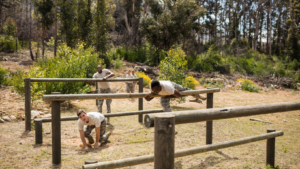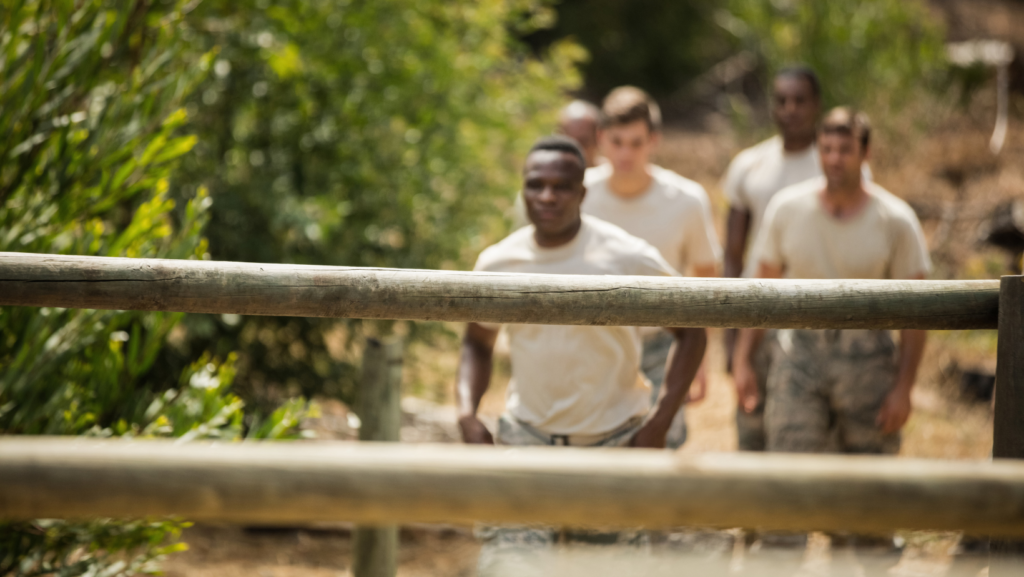Military fitness training isn’t just about building muscle; it’s a rigorous regimen designed to prepare soldiers for the physical and mental demands of combat. This type of training focuses on endurance, strength, agility, and resilience, ensuring that military personnel can perform under extreme conditions.
Unlike typical gym workouts, military fitness routines incorporate functional movements and high-intensity exercises that mimic real-life scenarios. From obstacle courses to endurance runs, these workouts push individuals to their limits, fostering teamwork and discipline. Whether you’re aspiring to join the armed forces or simply looking to elevate your fitness game, understanding the principles of military training can offer valuable insights into achieving peak physical condition.
Military Fitness Training
 Military fitness training encompasses a comprehensive approach to building physical and mental resilience. It targets critical elements like endurance, strength, agility, and flexibility. Soldiers engage in functional movements and high-intensity exercises, simulating combat conditions. This regimen includes running, obstacle courses, and strength training, emphasizing practicality over aesthetics. Group activities foster teamwork and discipline, essential traits for military operations and civilian life. Training adapts to evolving combat demands, ensuring soldiers remain optimally prepared. This dynamic and rigorous structure is beneficial for anyone seeking to improve overall fitness and discipline, not just military personnel.
Military fitness training encompasses a comprehensive approach to building physical and mental resilience. It targets critical elements like endurance, strength, agility, and flexibility. Soldiers engage in functional movements and high-intensity exercises, simulating combat conditions. This regimen includes running, obstacle courses, and strength training, emphasizing practicality over aesthetics. Group activities foster teamwork and discipline, essential traits for military operations and civilian life. Training adapts to evolving combat demands, ensuring soldiers remain optimally prepared. This dynamic and rigorous structure is beneficial for anyone seeking to improve overall fitness and discipline, not just military personnel.
Key Components Of Military Fitness Programs
Military fitness programs encompass specific elements to prepare soldiers for physical and mental challenges. The components include:
Endurance Training
Endurance training focuses on enhancing cardiovascular capacity. Activities include long-distance running, cycling, and swimming to build stamina.
Strength Training
Strength training targets major and minor muscle groups. Exercises include weightlifting, push-ups, and squats for functional strength.
Agility Drills
Agility drills improve quick, controlled movements. Obstacle courses, shuttle runs, and ladder drills enhance coordination.
Mental Resilience
Mental resilience training involves stress management and coping mechanisms. Techniques include meditation, breathing exercises, and simulated combat scenarios.
Team-Based Workouts
Team-based workouts foster camaraderie and teamwork. Group exercises include relay races and synchronized drills to promote cooperation.
Benefits Of Military Fitness Training

Military fitness training transforms physical and mental health by building strength, endurance, and resilience. Regular participation in these programs improves cardiovascular health through intense activities like long-distance running and cycling. Strength training exercises, such as push-ups and squats, enhance muscle power and functional strength.
Mental toughness is a critical benefit. Techniques like meditation and simulated combat scenarios improve stress management. Group activities foster teamwork which is crucial for both military operations and broader life applications.
- Endurance: Enhanced cardiovascular health
- Strength: Increased muscle power
- Agility: Improved quick, controlled movements
- Mental Resilience: Better stress management
- Teamwork: Enhanced cooperation and cohesion
Common Military Fitness Training Techniques
Military fitness training techniques build endurance, strength, and mental resilience.
Running
Running is integral with various types, including long-distance and sprinting. Soldiers enhance cardiovascular health and stamina by running.
Obstacle Courses
Obstacle courses challenge agility, strength, and problem-solving skills through navigating barriers, climbing, and crawling.
Strength Training Strength training includes weightlifting, push-ups, and squats, targeting major muscles for functional strength.
Strength training includes weightlifting, push-ups, and squats, targeting major muscles for functional strength.
High-Intensity Interval Training (HIIT)
HIIT involves short bursts of intense exercise followed by rest, boosting cardiovascular fitness and endurance.
Group Exercises
Group exercises like relay races and synchronized drills promote teamwork and cooperation essential for military operations.
How To Adapt Military Fitness Training For Civilians
Military fitness training offers valuable insights for anyone looking to elevate their fitness routine. Civilians can incorporate endurance exercises like running and cycling to boost cardiovascular health. Functional strength can be developed through weightlifting, push-ups, and squats, focusing on practical movements rather than aesthetics.
Agility drills and obstacle courses can be adapted to home or gym environments, enhancing quick, controlled movements. Mental resilience techniques such as meditation and stress management exercises are also beneficial for handling everyday challenges. Group workouts can be organized with friends or fitness communities to foster teamwork and motivation.
By integrating these elements, civilians can achieve a balanced fitness regimen that builds physical and mental strength, preparing them for various life demands.

